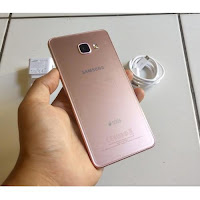Corning, the
popular glassmaker for mobile devices, corning manufactured Gorilla Glass specialized in toughened glass. Corning gorilla glass is chemically treated to make it hard and strong
enough to bear intense drops. Corning Gorilla
Glass 5 is now in fifth generation.
Available on
different OEM (original equipment manufacturer ) devices including Samsung, Apple
HTC, Lenovo, LG, HP, Asus, Xiaomi etc later this year.
Smartphone Samsung Galaxy Note 7 is
using Corning Gorilla Glass 5, which launch announce August 2016.
Upcoming models like Apple
iPhone 7 are more likely to Corning
Gorilla Glass 5.
CEO
of corning is Mr. John Bayne
Features of Corning Gorilla Glass 5
-
Drop test from 1.6 meter compared to 1 meters
of Corning Gorilla Glass 4
-
Company says
the new glass can survive up to 80%
-
Survive on
rough Surfaces
-
company is
keeping Corning Gorilla Glass versions 3 and 4 available to manufacturers at a
lowered price point, but will likely start to wind down the former in the near
future
-
shipments
currently amount to around one billion devices per year
-
Corning has remarkable
achievement of making smartphone glass
Making process
1-
Fusion process
-
This
extraordinarily complete, highly automated
-
sheet cover glass
with pristine surface quality
-
liquefied glass is
fed into a holder called an “isopipe,” overfilling until the glass flows evenly
over both sides
-
glass is untouched
by human hands or anything else
-
Ion exchange is a
chemical treated process where large ions are “stuffed” into the glass surface,
creating a state of compression
-
The glass is
placed in a hot bath of liquid salt at a temperature of approximately 400
degrees C
-
Smaller sodium
ions leave the glass, and larger potassium ions from the salt bath replace them
-
Gorilla Glass’
composition enables the potassium ions to diffuse far into the surface,
creating high compressive stress deep into the glass.
-
This layer of
compression creates the surface that is more resistant to damage















